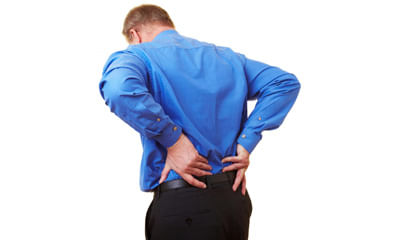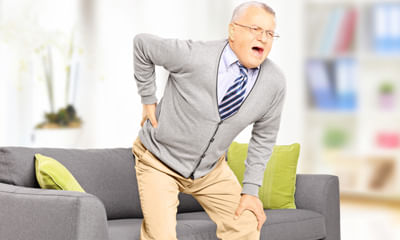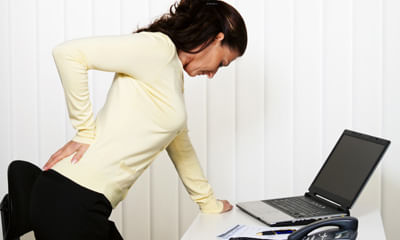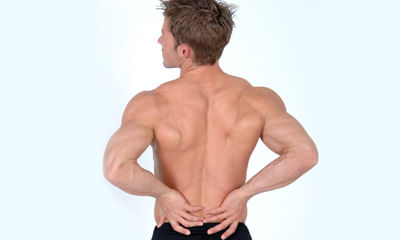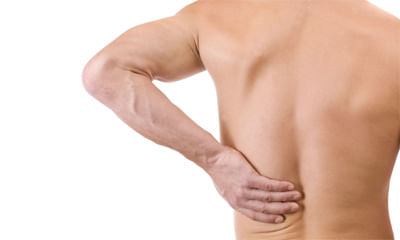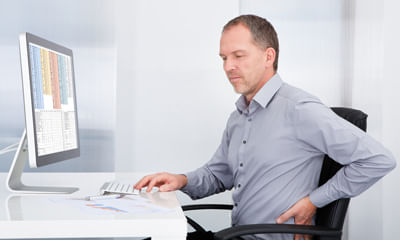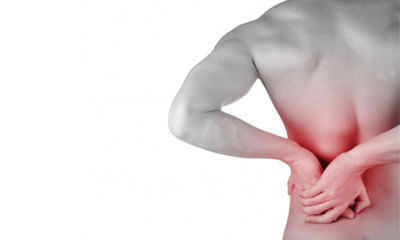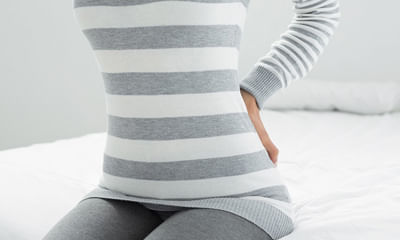Top Questions on Managing Back Pain
My mother has a pain in upper back side she has gerd and fatty liver problem a year ago, plss help how to relieve from t ...
Ask Free Question
Upper back pain can occur anywhere between the base of the neck and the bottom of the rib cage. Upper back pain may be caused by injuries or fractures, poor posture, disk problems or other issues, such as arthritis.The common causes of upper back pain stem from inflammation and micro-tears in the muscles, tendons and ligaments of the upper back or from arthritis, herniated disks, vertebral stenosis, or misalignments in the thoracic or cervical spine.A combination of rest, over-the-counter pain medications, and using a heating pad or ice pack can help reduce swelling, relax muscles, and promote healing. You can also visit physiotherapy clinics for drug free treatment option.
I am 23 years old l. I have lower back pain from 1 year. And recently my shoulders are uneven from 2 months. I go to gym ...
Ask Free Question
Sit on an upright bench, like one you'd use for a shoulder press. Holding a dumbbell in your right hand, place your left hand under your left butt cheek and grab the side of the seat. Let your right hand hang down straight by your side and pull your shoulder blades back and together. Now raise your right shoulder up towards your ear-raise it straight up instead of rolling yourshoulder. Hold for a beat at the top, and then return to the start position. Complete a set of 10, and repeat on the other side. Knee pain. If you are overweight, losing weight will also help to reduce pressure on your knee.•mobility exercises rest. Avoid doing things that require you to bend at the hip or put a lot of pressure on the hip. Avoid sleeping on the side of your hip that is painful and sitting for long periods of time •cold and heat. Treating pain with heat and cold may help. Wrap an ice pack or a bag of frozen vegetables in a towel to ice your hip. A warm bath or shower may also help reduce your pain and prepare your muscles for stretching. •stretch. Gently stretching your body may reduce hip pain, especially if the cause is a strain or pinched nerve.
Good morning sir my mother got a lower back pain and she got the pain more than 25 days what should I do for her? ...
Ask Free Question
Consult with ortho doc for medicines, take her to physiotherapy clinic and ask for IFT+US therapy for 10 days, after reducing of pain will be suggested with strengthening exercises. Hot compression twice a day with local diclofenac application will help reducing of pain. Maintaining proper posture is important.
I am turning 48 next month. I have lower back pain and also an incontinence problem. A few years back I had to keep stan ...
Ask Free Question
Take electrotherapy for 2 weeks, in a first week through ift+us therapy or swd the pain will be reduced and then you will be suggested with lower nack strengthening exercises, also ask ofr kegel exercises to strengthen the pelvic muscles to solve incontinence problem. Consult with urologist for medicines for bladder issue.
My mom felt some pain at her back she can not breath in one position hours passed things getting worst I took her to a h ...
Ask Free Question
Due to high sugar probably she would have had chest congestion which would've made her to have breathlessness.
I have a bartholin cyst, a year back at safdarjung hospital I got treated and they drained it without any cut or surgery ...
Ask Free Question
Bartholiabn cyst are very common so sometime it cure by its own better to take homeopathic treatment.
I have been suffering from disc herniation for the last 5 weeks. Pain is less than before. Rarely pain is observed in le ...
Ask Free Question
Poor sitting posture is a common cause of sciatica. To assist the support of your lower back many simple and effective products have been developed over time. These include: lumbar d-roll bassett frame kinesiology lumbar tape please ask your physiotherapist for their advice in what will help you most. This simple stretch helps relieve sciatica pain by loosening your gluteal and piriformis muscles, which can become inflamed and press against the sciatic nerve. 1.Lie on your back with your legs extended and your feet flexed upward. 2.Bend your right leg and clasp your hands around the knee. 3.Gently pull your right leg ac 4.Ross your body toward your left shoulder. Hold it there for 30 seconds. Remember to pull your knee only as far as it will comfortably go. You should feel a relieving stretch in your muscle, not pain. 5.Push your knee so your leg returns to its starting position. 6.Repeat for a total of 3 reps, and then switch legs. 5.sitting spinal stretch sciatica pain is triggered when vertebrae in the spine compress. This stretch helps create space in the spine to relieve pressure on the sciatic nerve. 1.Sit on the ground with your legs extended straight out with your feet flexed upward. 2.Bend your right knee and place your foot flat on the floor on the outside of your opposite knee. 3.Place your left elbow on the outside of your right knee to help you gently turn your body toward the right. 4.Hold for 30 seconds and repeat three times, then switch sides. 6. Standing hamstring stretch this stretch can help ease pain and tightness in the hamstring caused by sciatica. 1.Place your right foot on an elevated surface at or below your hip level. This could be a chair, ottoman, or step on a staircase. Flex your foot so your toes and leg are straight. If your knee tends to hyperextend, keep a slight bend in it. 2.Bend your body forward slightly toward your foot. The further you go, the deeper the stretch. Do not push so far that you feel pain. 3.Release the hip of your raised leg downward as opposed to lifting it up. If you need help easing your hip down, loop a yoga strap or long exercise band over your right thigh and under your left foot. 4.Hold for at least 30 seconds, and then repeat on the other sideif you have low back pain and sciatica you can undergo intermittent pelvic traction where in your half of your body weight will be added in the electronic traction so that that would help you to reduce the pain, along with interferential therapy stimulations which would help you to get relieved from the radiating pain. Apply ice for the pain to get subsided immediately. If you cannot go immediately for the physiotherapy treatment. Ice can be kept in the low back where you have back pain. It is suggestible to wear lumbo sacral belt which would help you to build the abdominal muscle tone which itself would make you feel better. You can also wear mcr chappals which would help you to have less weight falling in the painful back. U have to take vitamin d rich foods. Likemilk,cheese, yogurt,brocoli, spinach.u need calcium consumption for increase the bone density. Lackof bone and bones crush inside the body this might be due to low calcium or vitamin d which has more impact on the bone density and also it makes one to feel that there is lack of bone strength or in a way the bones are brittle and almost breaking and they feel it is crushed in a way there are many bones breaking at the same time. You have to take vitamin d rich foods. Likemilk,cheese, yogurt, brocoli, spinach.u need calcium consumption for increase the bone density. vitamin d intake via supplements or exposure to low levels of sunlight. Vitamin d is used to absorb calcium in the bone and regulate calcium in the blood. If you have leg pain then you have to rule out the causes for having leg pain. First of all check your weight and your haemoglobin levels, as anaemia always leads to the symptoms of being tired and also having leg pain though there are no issues with the knee joint or back pain. If not if the pain radiates down the back of thigh and legs then it might be due to sciatica. Kindly consult the nearby physiotherapist. Hope you recover soon from the leg pain. Lumbar radiculopathy: pain in lower back or glutei region with sharp shooting pain radiating from hip to leg/foot region, occurs in cases of lumbar radiculopathy or sciatica. This is due to compression of lumbar nerve root or sciatic nerve by disc prolapse, facet joint, trauma, hypertrophied ligamentumflavum, piriformis syndrome, etc. L5 vertrbrae and patient has pain the legs and sensation is disturbed? That is called as lumbar vertebrae. And there are 5 lumbar vertebrae and the 5th lumbar vertebrae is always is located in the lower end where the body weight is taken and it is generally fused with sacral vertebrae. That is where the sciatic nerve passes by and the nerve gets compressed that's the reason you have pain and sensation is disturbed. Loss of concavity of l4-l5 vertebrae. It is other wise called as the lumbo sacral curve which is very important for the spine to take the entire weight evenly if not it leads to disturbance of the disc and also the vertebrae which makes the spine to loose its concavity that's why it is called as loss of posterior concavity. For which we need to improve the spine posture and we need to adapt good posture during our day to day life activities. I have pain in my left side leg. This should be due to the sciatic nerve compression in the right side probably close to your l5 vertebrae. It can also be due to the strain on the left leg, try wearing mcr chappals which would help you to get relieved from pain. We suggest you to wear a lumbo sacral corset and also modified foot wear if you want we can send you by courier.
Is it advisable to use a pillow under your legs while sleeping if you develop back pain. Some people advise heating but ...
Ask Free Question
Yes keeping a pillow under the knees definitely helps you to to facilitate digestion and also to have comfort while sleeping especially when you have severe back pain. That gives you maximum comfort while sleeping. Hot water fermentation or heat pads will give you relaxation but while sleeping pillow is the best. Let us know if you want we can give you suggestions on using venous pillow which will help and regulate the blood flow in the legs while sleeping considering your age. No not all the pain is definitely due to back muscle strain for copd you can do generally good breathing exercises or you can use spirometry to improve your pulmonary function.
Sir, I have been suffering from disc herniation for the last 4 weeks .i'm unable to sit or stand for more than one hour. ...
Ask Free Question
If you had disc herniation 4 weeks back, by now your pain should be better and you should be doing back strengthening exercises. If not taken physiotherapy treatment then I would suggest to take proper therapy with Precaution and correct set of exercises. Pain radiating down the leg means nerve compression is there it should get better with the therapy ..only taking medicines will not help.
My delivery done 10 months before from last two months I am suffering with back pain. ...
Ask Free Question
Counslt to physio do regular exercises advised by physio avoid forward bending lifting object ground sitting take healthy diet rich in calcium and d3, b thnks.

